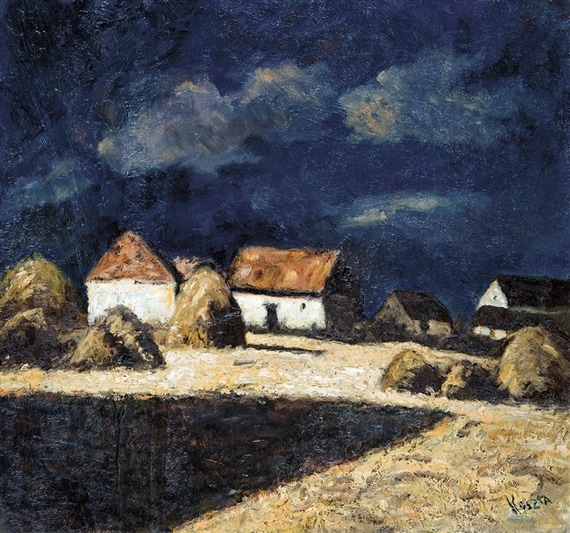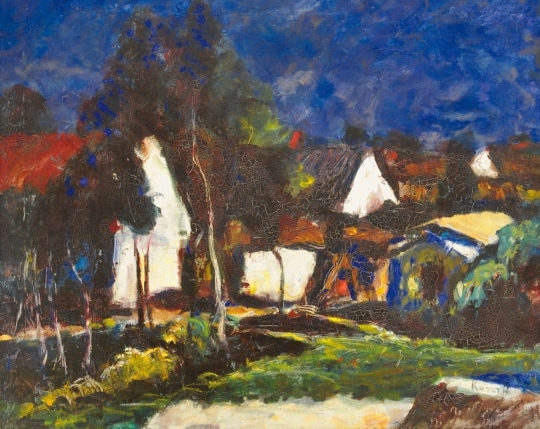One of the main characters in my novel The City of Earthly Desire is Reinhardt Drixler, a painter-turned-pastry chef and café owner whose early ambitions to become a recognized painter in are crushed by the communist regime in Hungary for political reasons. Reinhardt hails from a small village near the city of Pécs and becomes interested in art when he is still a young boy after he accidentally discovers two suitcases with paints, brushes, and other art supplies in the attic of his mother's home.
As I began to plan the novel, I envisioned Reinhardt as a common man from a humble background who shows great talent. He remains in the realist style and likens painting to a spiritual act. As these blurry first ideas drifted through my mind, I began to cast about for real life nineteenth and twentieth-century artists upon whom I might be able to model my Reinhardt character. In the end, Reinhardt became a composite of many painters, both in terms of style and, in some cases, life events and personality.
The first of these is József Koszta, a realist painter who dabbled with expressionism:
Born on 27 March 1861, Koszta trained at various schools of art, including the Academy of Fine Arts in Munich, which he attended in 1891 on a scholarship,[1] and the Master School of Gyula Benczúr. He studied under Károly Lotz and Bertalan Szekely. He became a member of the Szolnok Art Colony and worked largely in solitude on a farm he shared with landscape artist István Nagy for many years.
Koszta's artistic vision began to emerge in the 1920s. Working in the realism school, he focused heavily on images depicting peasant life, utilizing strong tonal colors and emphasizing the interplay of light and shadow. Particularly as his work progressed, he explored the pop of bright color against dark background. His prolific body of work includes portraits, genre paintings, still life and landscapes.
Prior to his death on 29 July 1949, he donated his images to the museum in Szentes, which renamed itself in his honor the Koszta József Múzeum.[2] source Wikipedia






 RSS Feed
RSS Feed

